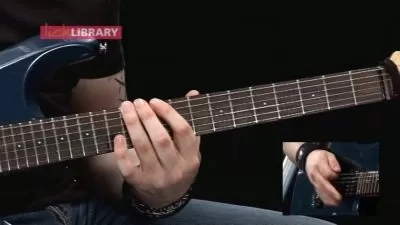About GuitarLearn More
From folk music to punk rock, nearly all musical genres can benefit from the many iconic sounds of the guitar. With proficiency in playing the guitar, you can learn to write songs, entertain around the campfire, or provide the rhythm or melody in a band. Udemy online guitar lessons are taught by experts in the field and can teach you basic fingering or broaden your repertoire of chords, strumming patterns, and more.
Sort by:
Sorting
The newest
Most visited
Course time
Subtitle
Filtering
Frequently asked questions about Guitar
The guitar is a six-stringed instrument with frets, which are the horizontal bars across the fingerboard used to denote separate musical notes. You play the guitar by plucking or strumming the strings using your fingertips, fingernails, or a guitar pick. To avoid simply strumming the open strings, your left hand presses strings down against the frets to form chords or individual notes. In acoustic and classical guitars, the guitar's hollow body resonates with the strings’ vibrations and amplifies the sound outward. With an electric guitar, the vibrating strings' sound gets picked up by electronics in the guitar and amplified through a speaker. The main types of guitar are steel-string acoustic, nylon-string classical, and steel-string electric guitars. Musicians use these instruments to play nearly every musical genre, from classical to folk to rock and beyond.
The type of guitar you choose to learn should depend on what interests you rather than which appears easier. Electric guitars are easier than acoustics to fret, but if you do not enjoy electric guitar music, what you gain in ease of play could be offset by a lack of enthusiasm. Similarly, if your goal is to play rock and roll or other types of music driven by the electric guitar, playing an acoustic may feel like it is holding you back. Take the time to consider which kind of guitar will help you achieve your goals and choose based on this decision. Acoustic guitars are usually better for fingerpicking, solo acts, folk, and other types of singer-songwriter music. Electrics are a better choice for those who want to play genres like rock, funk, grunge, punk, or other heavy music types.
A chord is a collection of three or more different notes heard simultaneously. Naming a chord involves isolating which notes are in that chord in relation to its associated scale. A major scale consists of seven consecutive notes before repeating an octave up, with each note either one or two half-steps above the previous. The most common chords are major and minor; a major chord sounds “happy,” while a minor chord sounds “sad.” The difference between them is but a single note — the 3rd note in the scale — which is a half-step lower in the minor chord but changes the feeling entirely.




















